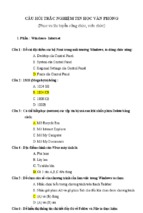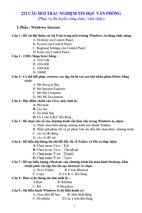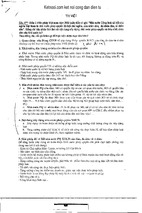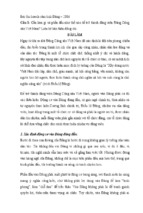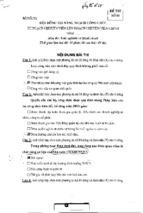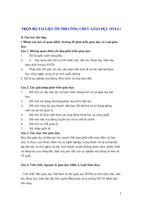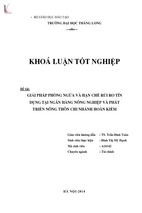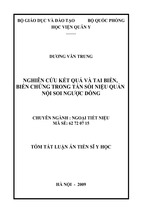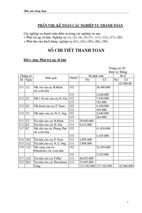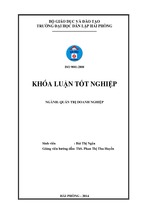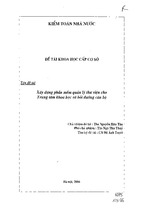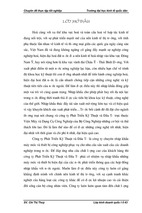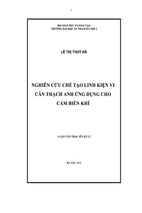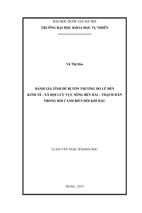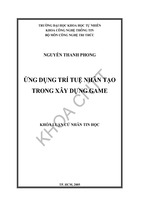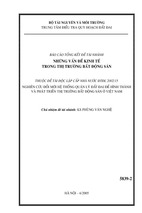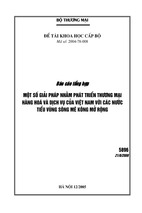國立屏東科技大學食品科學國際碩士學位學程
International Master’s Degree Program in Food Science
National Pingtung University of Science and Technology
碩士學位論文
Master’s Thesis
青花菜不同部位之抗氧化力評估
Evaluation of antioxidant activity of various parts of broccoli
指導教授 (Advisor): 謝寶全 博士 (Pao-Chuan Hsieh, Ph.D.)
研究生 (Student): 黎青寧 (Le Thanh Ninh)
中華民國 104 年 7 月 15 日
July 15, 2015
摘要
學號: G10280008
論文題目: 青花菜不同部位之抗氧化力評估
總頁數: 91
學校名稱: 國立屏東科技大學
系所別: 食品科學國際碩士學位學程
畢業時間及摘要別:103學年度第2學期碩士學位論文摘要
研究生: 黎青寧
指導教授: 謝寶全博士
論文摘要內容:
青花菜是一種具有高抗氧化活性的蔬菜。抗氧化劑可以清除自由基並保
護人體不受氧化傷害,而氧化壓力是造成心臟、心血管及慢性疾病還有
各種形式癌症的主要原因,本研究的主要目的是調查青花菜不同部位的
抗氧化活性。取青花菜小花、葉、種子和嫩芽(分 3、5、7、10 和 12
天)四種樣品,乾燥後再經由不同濃度的乙醇和熱水萃取,再使用多種
分析(ABTS、DPPH、還原力測試)來測定其抗氧化活性。本研究還測
定了總酚、總類黃酮及維生素 C 的含量。之後,將四組樣品的萃取液進
行細胞試驗包含肝癌細胞(HepG2 細胞)、人類肺癌細胞(A549)和小
鼠肝臟正常細胞(FL83B)之 MTT 試驗。結果顯示,在抗氧化劑的清
除力中,利用 80% 濃度的乙醇是具有最高能力的萃取溶劑。而在四組樣
品中青花菜嫩芽有最高的抗氧化活性,不論是在 DPPH(91%清除力、
ABTS(6909.5 µmol TE /100g)及還原力測試,也具有較高量的酚類、
類黃酮和維生素 C 含量,其含量分別為 2926.6(GAE),730(CE)和
378.3(AA)mg/100g。在不同濃度(50 - 500 µg/mL)的嫩芽和種子萃
取物中,顯示出樣品可抑制腫瘤細胞的增殖活性(40-50% cell viability)
和幫助正常細胞生長的能力(約 120% cell viability)。不同樣品的萃取
物其 IC50 值約在 100 - 400µg/mL 間。這項研究可能對消費者的食品選
I
擇有顯著的影響,如再進行深入的研究後,可對未來相關的商業產品提
供參考資訊。
關鍵字:青花菜、抗氧化活性、增殖、腫瘤細胞
II
Abstract
Student ID: G10280008
Title of Thesis: Evaluation of antioxidant activity of various parts of broccoli
Total Pages: 91
Name of Institute: National Pingtung University of Science and Technology
Department: International Master’s Degree Program in Food Science
Graduate Date: July 15, 2015
Degree conferred: Master Degree
Name of Student: Le Thanh Ninh
Advisor: Pao-Chuan Hsieh, Ph.D.
The Contents of Abstract in This Thesis:
Broccoli (Brassica oleracea. L) is a potential vegetable with high
antioxidant activity. Antioxidants can scavenge free radicals and protect the
human body from oxidative stress, which is the main cause of heart,
cardiovascular and chronic diseases, and various forms of cancer. Therefore,
the main objective of the study is to investigate antioxidant activity of
broccoli. Broccoli was used as a testing material and sampled in four groups,
including floret, leave, seed and sprout (3, 5, 7, 10 and 12 days). After drying
and extraction by different concentrations of ethanol and hot water, the
antioxidant activity of four groups were measured using diverse analyses
including 2,2'-azino-bis-3-ethylbenzothiazoline-6-sulphonic acid (ABTS);
1,1-diphenyl-2-picryl-hydrazyl (DPPH) and reducing power assays. The study
also estimated total phenolics, total flavonoids and vitamin C contents in
samples. Thereafter, the effect of broccoli extracts on proliferation of cell
lines was determined by MTT test in liver cancer cell (HepG2), lung cancer
cell (A549) and liver normal cell (FL83B). The results indicated that 80%
ethanol was the solvent with highest ability in antioxidant scavenging assays.
In four groups of sample, broccoli sprout extracted by 80% ethanol had the
highest antioxidant activity analyzed by DPPH (91% scavenging), ABTS
(6909.5 µmol TE/100g) and reducing power (3.91 absorbance at 700nm)
III
assays; and contained higher amounts of phenolic, flavonoid and vitamin C at
2926.6 (GAE), 730 (CE), and 378.3 (AA) mg/100g respectively. Sprout and
seed extracts showed the highest anti-proliferative activity of tumor cells (4050% cell viability) and the highest proliferative activity of normal cell
(around 120% cell viability) in different concentrations (50 – 500 µg/mL).
The IC50 values of different sample extracts were from approximately 100 400 µg/mL. The study might have a significant impact on consumers’ food
selections and provide scientific information for in-depth research about
commercial products.
Keywords: broccoli, antioxidant activity, proliferation, tumor cell
IV
Acknowledgements
Firstly, I would like to take this opportunity to express my sincere
appreciation and gratitude to the National Pingtung University of Science and
Technology (NPUST) for funding my studies in Taiwan, and the International
Master’s Degree Program in Food Science (IMAFS) for providing study
facilities and new education experience.
I would like to sincerely express my appreciation and gratitude to Prof.
Pao-Chuan Hsieh, my advisor, for his advice, encouragement and valuable
suggestions throughout my Master program.
I also would like to acknowledge my thanks to Dr. Jia-Hsin Guo and
Dr. Chiu-Hsia Chiu for their advice and motivation to studying.
I am very grateful to all of my laboratory members (FS206) and my
friends at “IMAFS” for their friendship, supports, pushing me up and special
experiences in Taiwan.
Finally, I wish to express my deepest appreciation to my beloved family
for their unconditional love, support and motivation during the years of study
abroad and this thesis is dedicated to them.
Le Thanh Ninh
V
Table of Contents
摘要 .................................................................................................................... I
Abstract ........................................................................................................... III
Acknowledgements .......................................................................................... V
Table of Contents ............................................................................................ VI
List of Tables ................................................................................................ VIII
List of Figures ................................................................................................. IX
1. Introduction ................................................................................................. 1
2. Literature Review........................................................................................ 3
2.1. Broccoli................................................................................................. 3
2.1.1. Origin and taxonomy ...................................................................... 3
2.1.2. Health promoting compounds ........................................................ 6
2.1.3. Antioxidant properties .................................................................. 12
2.1.3.1. Water-soluble antioxidants .................................................... 12
2.1.3.2. Lipid-soluble antioxidants ..................................................... 17
2.1.4. Biological activities and health .................................................... 21
2.1.4.1. Antioxidant activities ............................................................. 23
2.1.4.2. Anticancer activities ............................................................... 27
2.1.4.3. Other activities ....................................................................... 28
2.1.5. In vitro Broccoli cell-based studies .............................................. 29
2.2. Antioxidants and antioxidant activity ................................................. 31
2.2.1. Free radicals and oxidative stress ................................................. 31
2.2.2. Natural antioxidants ..................................................................... 34
2.2.3. Methodologies for antioxidant activity ........................................ 37
2.2.3.1. Antioxidant activity screening assays .................................... 37
2.2.3.2. Antioxidant compounds analysis ........................................... 39
2.2.4. In vitro effects of phenolics .......................................................... 41
3. Materials and Methods .............................................................................. 43
3.1. Materials ............................................................................................. 43
3.1.1. Broccoli ........................................................................................ 43
VI
3.1.2. Cell lines ....................................................................................... 43
3.1.3. Chemicals ..................................................................................... 43
3.2. Methods .............................................................................................. 46
3.2.1. Preparation and drying of group samples..................................... 47
3.2.2. Samples extraction ....................................................................... 47
3.2.3. Determination of total phenolic contents (TPC) .......................... 48
3.2.4. Determination of total flavonoid contents (TFC) ........................ 48
3.2.5. Determination of vitamins C contents .......................................... 48
3.2.6. DPPH radical scavenging assay ................................................... 49
3.2.7. ABTS radical cation decolorization assay ................................... 49
3.2.8. Reducing power assay .................................................................. 50
3.2.9. Cell lines and culture .................................................................... 50
3.2.10. Cell viability assay ....................................................................... 51
3.2.11. Statistical analysis ........................................................................ 51
4. Results and Discussion ............................................................................. 52
4.1. Antioxidant compounds analysis ........................................................ 52
4.1.1. Total phenolics ............................................................................. 52
4.1.2. Total flavonoids ............................................................................ 55
4.1.3. Total vitamins C ........................................................................... 58
4.2. Antioxidant capacity analysis ............................................................. 61
4.2.1. DPPH scavenging assay ............................................................... 61
4.2.2. ABTS assay .................................................................................. 64
4.2.3. Reducing power assay .................................................................. 67
4.3. Proliferation on cell lines analysis ...................................................... 70
4.3.1. Proliferation on A549 cell line ..................................................... 70
4.3.2. Proliferation on HepG2 cell line .................................................. 72
4.3.3. Proliferation on FL83B cell line .................................................. 74
5. Conclusion ................................................................................................ 76
6. References ................................................................................................. 77
Biosketch of Author ........................................................................................ 91
VII
List of Tables
Table 1. Ascorbic acid (AA) content of Brassica vegetables ......................... 14
Table 2. Applications in the analysis of vitamins C in broccoli samples. ...... 15
Table 3. Applications in the analysis of phenolic compounds in broccoli
samples. ............................................................................................. 17
Table 4. Applications in the analysis of carotenoids in broccoli samples ...... 20
Table 5. Summary of works evaluating the antioxidant potential of
broccoli ............................................................................................. 25
Table 6. List of the important assays to screen antioxidant activity ............... 38
Table 7. List of the important techniques used for antioxidants analysis ....... 40
VIII
List of Figures
Figure 1. Morphology of sprouting broccoli ..................................................... 5
Figure 2. The published works in the last years related to determination
of broccoli compounds ...................................................................... 7
Figure 3. The extraction techniques used to analyze health promoting
compounds of broccoli in the last five years. .................................... 8
Figure 4. The health promoting compounds analyzed of broccoli in the last
five years ............................................................................................ 9
Figure 5. The characterization techniques used to analyze health promoting
compounds of broccoli in the last five years ................................... 10
Figure 6. Summary of the different biological activities attributed to the
health promoting compounds of broccoli in the last five years ...... 22
Figure 7. ORAC values of selected vegetables ............................................... 26
Figure 8. Structures of glucosinolate precursor (A) glucoraphanin and
isothiocyanate hydrolysis product (B) sulforaphane ....................... 27
Figure 9. Targets of free radicals .................................................................... 33
Figure 10. Natural antioxidants separated in classes ...................................... 36
Figure 11. Morphology of FL83B cell at different magnifications ............... 45
Figure 12. Morphology of HepG2 cell at different magnifications ............... 45
Figure 13. Morphology of A549 cell at different magnifications .................. 45
Figure 14. The flow chart of experimental design ......................................... 46
Figure 15. Total phenolic content of broccoli fresh weight in solvent
extractions of sprout in different sprouting times (a) and
different parts (b)...........................................................................53
Figure 16. Total phenolic content of broccoli dry weight in solvent
extractions of sprout in different sprouting times (a) and
different parts (b)............................................................................54
IX
Figure 17. Total flavonoid content of broccoli fresh weight in solvent
extractions of sprout in different sprouting times (a) and
different parts (b)............................................................................56
Figure 18. Total flavonoid content of broccoli dry weight in solvent
extractions of sprout in different sprouting times (a) and
different parts (b)............................................................................57
Figure 19. Vitamin C content of broccoli fresh weight in solvent
extractions of sprout in different sprouting times (a) and
different parts (b)............................................................................59
Figure 20. Vitamin C content of broccoli dry weight in solvent
extractions of sprout in different sprouting times (a) and
different parts (b)............................................................................60
Figure 21. DPPH scavenging activity of broccoli fresh weight in solvent
extractions of sprout in different sprouting times (a) and
different parts (b)............................................................................62
Figure 22. DPPH scavenging activity of broccoli dry weight in solvent
extractions of sprout in different sprouting times (a) and
different parts (b)............................................................................63
Figure 23. ABTS scavenging activity of broccoli fresh weight in solvent
extractions of sprout in different sprouting times (a) and
different parts (b)............................................................................65
Figure 24. ABTS scavenging activity of broccoli dry weight in solvent
extractions of sprout in different sprouting times (a) and
different parts (b)............................................................................66
Figure 25. Reducing power of broccoli fresh weight in solvent
extractions of sprout in different sprouting times (a) and
different parts (b)............................................................................68
X
Figure 26. Reducing power of broccoli dry weight in solvent
extractions of sprout in different sprouting times (a) and
different parts (b)............................................................................69
Figure 27. Different concentrations of dried different broccoli part’s
extracts on A549 cell viability by MTT method (a) and
IC 50 value (b)................................................................................71
Figure 28. Different concentrations of dried different broccoli part’s
extracts on HepG2 cell viability by MTT method (a) and
IC 50 value (b)................................................................................73
Figure 29. Different concentrations of dried different broccoli part’s
extracts on FL83B cell viability by MTT method (a) and
IC 50 value (b)................................................................................75
XI
1. Introduction
In recent years, the role of natural dietary antioxidants in disease
prevention has been the focus of many investigations. Antioxidants inhibit
free radical reactions, and may therefore protect cells against oxidative
damage (Pham-Huy et al. 2008). Oxidative stress has long been described as
a critical factor in the pathogenesis of various diseases, including cancer,
chronic diseases and cardiovascular disease (Bjelakovic et al. 2012). The
ability of an excess reactive oxygen species to damage macromolecules like
DNA, protein, and lipids is often referred to the initiation and progression of
carcinogenesis and abnormal vascular cell proliferation (Boivin et al. 2009;
Carocho and Ferreira 2013). Several studies indicated that fruits and
vegetables are good sources of many health promoting compounds and
potentially protective phytochemicals including glucosinolates and various
kinds of natural antioxidants such as phenolics, carotenoids, selenium, or
vitamins (Kurilich et al. 2002; Wu et al. 2004).
Among the most widely nutritional vegetables, broccoli (Brassica
oleracea L.), which is thought to have originally come from the eastern
Mediterranean area and to have been introduced to Europe long time ago
(Branca 2008), is nowadays consumed worldwide and is highly valued by
large groups of the population due to its flavor, but also due to its health
promoting benefits with anticancer or antioxidant properties, which have been
mainly attributed to glucosinolates as well as phenolic compounds, vitamins
and minerals respectively (Latté et al. 2011). Consequently, incorporating
some of these broccoli health promoting compounds directly or adding to
pharmaceutical products (nutraceutical) or other foods (functional foods) once
they have been isolated and extracted from this vegetable, is a safe and
effective way to guard against many of today‟s most common diseases
(Boivin et al. 2009; Bjelakovic et al. 2012).
Due to the potential effects from high antioxidant properties of
broccoli, it is important to be able to measure antioxidant activity using
biologically relevant assays (Song et al. 2010). Over the past five years, the
1
rising interest in the extraction, isolation, characterization and determination
of the biological activity of these beneficial broccoli compounds has been
demonstrated by large number of published research papers dealing with this
issue (Ares et al. 2013; Soengas Pilar et al. 2011). The previous researchers in
different regions of the world have indicated that broccoli possessed high
antioxidant capacity refers to different broccoli parts, diverse extraction
treatments or various kinds of biological assays (Jahan et al. 2010). However,
so far, no study has been carried out on antioxidant properties and chemical
constituents of broccoli from Taiwan. Particularly, to date, only few studies
determined the antioxidant capacity of broccoli leave, seed and sprout
separately. In addition, currently, the critical relevance of the dietary intake of
plant-origin nutrients and bioactive phytochemicals beneficial for health and
well-being has become a paradigm in the design of modern diets and plans of
pharmaceutical products or functional foods (Dominguez‐Perles et al. 2011;
Moreno et al. 2006).
Therefore, the main objective of the study is to investigate total
antioxidant activity of broccoli floret, leave, seed and sprout. The results
might have a significant impact on consumers‟ food selections and provide
scientific information for in-depth research about commercial products.
2
2. Literature Review
2.1.
Broccoli
2.1.1. Origin and taxonomy
Broccoli (Brassica oleracea L.) is a traditional European crop that have
become widespread in Asia in recent decades whereas its presence in Europe
has been quite stable (Branca 2008). Broccoli is an edible green plant in the
cabbage family whose large, flowering head is eaten as a popular vegetable.
The word broccoli comes from the Italian plural of broccolo, which means
"the flowering crest of a cabbage" (Gray 1982). Broccoli has large flower
heads, usually green in color, arranged in a tree-like structure branching out
from an edible stalk. The flower head is surrounded by leaves (Buck 1956).
Broccoli resembles cauliflower, which is a different cultivar group of the
same species (Branca 2008).
In recent years, the interest in broccoli cultivation has grown because of
the genetic improvement programs in several countries, mainly in Asia,
Europe and the USA, and due to the new opportunities offered by the food
industry in exploiting traditional and new phenotypes in transformation
processes (Soengas et al. 2012; Latté et al. 2011). In addition, the healthy
compounds contained in the produce of several brassicas which allows them
to be defined as functional foods, are important for increasing the
consumption of broccoli (Koh et al. 2009). The diversity present for broccoli
in germplasm, which could be exploited to provide new horticultural items, is
important for breeding programs aimed at meeting new consumer
requirements (Kurilich et al. 2002).
The origin of group to which broccoli belongs is the Brassicaceae and
specifically to the Brassica genus (Buck 1956). The Brassicaceae is a large
family comprised of approximately 3,000 described species apportioned
among 350-380 genera (Kurilich et al. 2002). The many varieties show
considerable diversity in form, with different parts of the plant being
consumed as vegetables (Soengas Pilar et al. 2011). Most authorities today
consider broccoli belong to the species Brassica oleracea L. and there are two
3
major varieties of broccoli, B. oleracea L. var. botrytis or cauliflower broccoli
and B. oleracea L. var. italica Plenk or sprouting broccoli (commonly called
broccoli, broccoli florets or broccoli heads) (Gray 1982). In fact, this species
is strictly related to other species of the genus and indirectly shares a gene
pool with them (Branca 2008).
The sprouting broccolis are thought to originally come from the eastern
Mediterranean area although it is not known when they first appeared (Buck
1956). The earliest description of sprouting broccoli was by Dalechamp in the
16th century. After that Miller's Gardeners' Dictionary of 1724 refers to
"sprout colliflower" or "Italian asparagus". In their descriptions, the sprouting
nature of the plant was indicated (Branca 2008). From the eastern
Mediterranean, broccolis were introduced into Europe, especially to Italy, in
the medieval times (Buck 1956). A lot of cultivars have been cultivated in
Italy and later on in other parts of Europe as well as in America (Latté et al.
2011; Heres-Pulido et al. 2010).
4
Figure 1. Morphology of sprouting broccoli
(Dominguez‐Perles et al. 2011)
5
2.1.2. Health promoting compounds
The discovery of bioactive components in foods is exciting, suggesting
the possibility of improved public health through diet (Jeffery et al. 2003).
The critical relevance of the dietary intake of plant-origin nutrients and
bioactive phytochemicals beneficial for health and well-being has become a
paradigm in the design of modern diets and plans (Dominguez‐Perles et al.
2011). The Brassicaceae plants are amongst the most consumed vegetables in
the world. These plant products have also been associated with beneficial
health effects based on the presence of bioactive compounds, with antioxidant
capacity, such as vitamins C and E, carotenoids, phenolics, flavonoids (Aires
et al. 2011; Singh et al. 2007).
Like other species of the Brassica family, broccoli contains a rich
source of health promoting phytochemicals such as vitamins, glucosinolates,
phenolic compounds, and dietary essential minerals (Gliszczyńska-Świgło et
al. 2006; Jeffery et al. 2003). Because of the interest in its bioactive
composition and nutritive value for health promotion, consumption of
broccoli is increasing steadily worldwide over the years (Moreno et al. 2006).
Over the past several years, the rising studies in the extraction,
characterization and determination of the biological activity of these
beneficial broccoli compounds have been demonstrated by the large number
of published research papers dealing with this issue (Figure 2.).
It is also interesting to mention that many extraction, separation and
determination techniques have been employed to obtain and characterize
these compounds from broccoli (Figure 3). As can be seen in Figure 4, several
compounds have been investigated during the period of time such as
glucosinolates and related compounds (33% of the publications), phenolic
compounds (28%), vitamins (14%) or other essential elements like Se,
minerals for human nutrition (Ca and Mg), main (Na, K, Cl and P) or trace
(Fe, Zn, Cu, Mn, I, F, Se, Cr, Mo, Co, and Ni) elements and sugars (Ares et
al. 2013; Dominguez‐Perles et al. 2011; Borowski et al. 2008).
6
Figure 2. The published works in the last years related to determination of
broccoli compounds (data up to January 2013) (Ares et al. 2013)
7
Figure 3. The extraction techniques used to analyze health promoting
compounds of broccoli in the last five years (Ares et al. 2013).
8
- Xem thêm -


